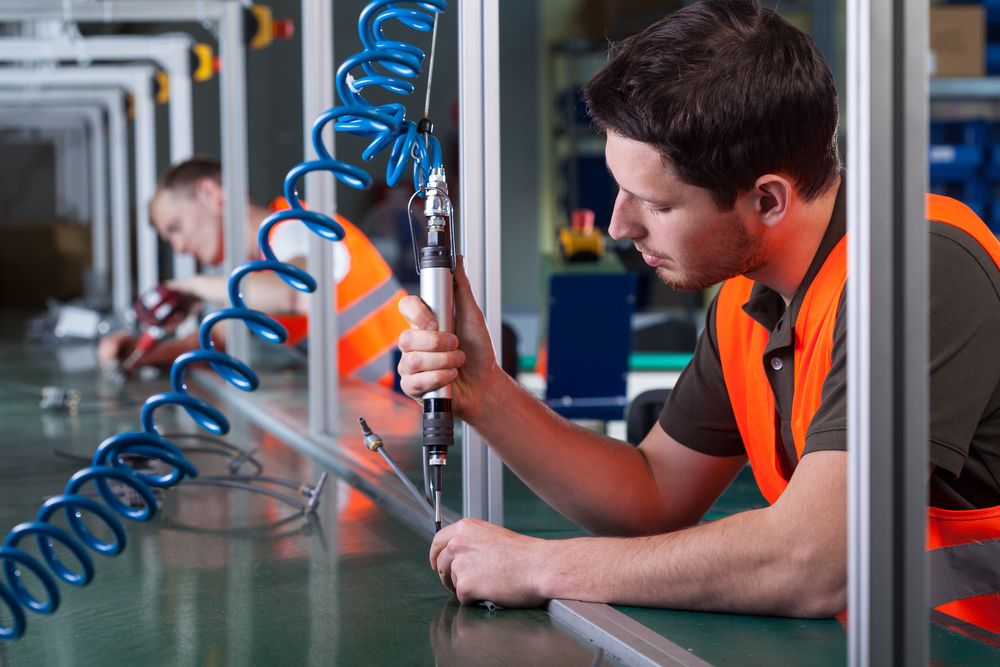
How to Bridge the Manufacturing Skills Gap
Even the most bearish of economists couldn’t have predicted the degree to which the nation’s economy has changed in a mere six months, let alone years. The unemployment rate is in the double-digits, long-standing companies are closing their doors for good, and working from home has become the new daily routine for employees in numerous industries.
But one thing hasn’t changed – manufacturers remain in hiring mode, eager to find and recruit experienced laborers to fill the manufacturing skills gap, which is widening. Business owners must face this new reality head-on and adjust to remain as productive and competitive as possible by leveraging existing resources and making sense of data.
Over 522,000 positions require filling
According to the most recent statistics available from the Bureau of Labor Statistics, detailing job opening and labor turnover from this past June, there were 522,000 jobs among manufacturers that had yet to be filled across the U.S., nearly 20,000 more in less than two years’ time.
“As many as 4.6 million jobs may be left unfilled between now and 2028.”
Manufacturing is a broad field, from consumer electronics to packaged goods. Virtually all of them are in the midst of a work experience deficiency. If conditions don’t change, some 4.6 million jobs may be left unfilled between now and 2028, according to forecasts from the Manufacturing Institute.
Speaking to CNBC, Samsung America Regional Director of Human Resources Sherri Satterfield said that while her company has received plenty of applications from those ready and willing to work, applicants frequently don’t have the background in the industry that’s required to make the transition seamless.
“We’re pulling candidates from all over the surrounding counties, and they don’t always have that experience,” explained Satterfield, who works at the electronics conglomerate’s Newberry, South Carolina-based plant. “So it takes them a while to get acclimated to it. Some of them decide that it’s not for them, and then other ones they activate, they’re here for a good amount of time.”
Hiring complicated by COVID-19
The economic aftereffects of the lockdown, instituted in virtually every state to control the spread of the novel coronavirus, have made the vetting process even more complicated and prolonged. For almost the entirety of 2019 and the first two months of 2020, joblessness in the U.S. was at record lows, under 4%, according to BLS and Labor Department figures. Once it ballooned to nearly 15% in April, manufacturers were inundated with employment inquiries, frequently from people who were laid off and looking to enter an all-new career. The sheer volume of resumes made locating experienced laborers the equivalent of finding a needle in a haystack.
Given the ongoing recession and the urgency that COVID-19 has created, manufacturers are adjusting their expectations and making the most of their situation. In short, they’re optimizing existing work processes, their skilled laborers’ capabilities, and their current equipment. Some of this involves investing in new technologies or better utilizing existing ones.

Utilizing technology to reimagine the shop floor
While the manufacturing skills gap is often considered a human resources issue, technology can help to upskill potential or current employees to address it. Case in point is Honeywell Technologies. As detailed by IndustryWeek, the multinational defense contractor is leveraging both augmented reality and virtual reality for onboarding workers and providing their existing employees with new skill sets.
Eric Seidel, vice president of strategy and chief marketing officer at Honeywell Technologies, told the publication that since many of their workers are entering retirement, they’re bringing their often decades-long experience with them. Taking advantage of AR and VR helps new and current hires to learn more efficiently and quickly.
“Instead of traditional classroom learning, AR and VR allow someone to actually perform the task and therefore the learning curve is much faster,” Seidel explained to IndustryWeek.
He further noted that intelligent wearables enable workers to be more hands-on in their understanding of how to implement certain jobs, tasks, and processes so they’re learning and working simultaneously. Along with employee education, wearables can collect data around footprint and equipment utilization, which can be used to better optimize the shop floor.
In essence, Honeywell is reimagining the shop floor, where workers are learning something new every day and putting those lessons into practice almost immediately. This is a strategy that manufacturers may want to consider in order to optimize existing processes or make more strategic adjustments to when employees are on the shop floor and for how long. Revamping work shifts can help increase productivity with the workforce they have.
Another way that manufacturers are aiming to close the skills gap – and succeeding in those efforts – is by making processes more predictable in terms of results. Outcome simulation gives workers the foresight they need to know what to expect in terms of throughput and where potential logjams may exist in the supply chain. The ability to replicate processes so they’re done virtually is accomplished through VR.
Samer Forzley, CEO of Simultech Multimedia, likened outcome simulation to what prospective military or commercial pilots do to obtain certification for careers in the cockpit.
“Think about a pilot who learns through simulating a variety of problems that could occur,” Forzley told IndustryWeek. “We are doing the same thing for the factory floor.”
Forzley added that simulation is effective not just for people who are brand new to manufacturing, but also those who are long-tenured. Since technology is always getting more advanced, utilizing tech helps workers acquire new skill sets or refresh what they’ve already learned.
Dive into data
Much can be learned from data, but manufacturers must first be able to obtain it and parse it, said Marco Annunziata, senior contributor for Forbes. Improved data collection and visualization in addition to well-defined KPIs can help manufacturers to get a better understanding of the extent of their skills shortage in order to best address it.
“We need more analysis and data to better understand the problem,” Annunziata wrote.
You don’t necessarily need workers with decades of experience to remain competitive. You have to work smarter by making the most of your existing resources and knowing what data to collect to diagnose pain points. Whether it’s asset utilization, cycle time reduction, or quality improvement, USC Consulting Group can help you close the manufacturing skills gap by making processes smoother and more efficient. This will help you rediscover what you do well and how you can become better. Contact us today to learn more about what we can do for you.







